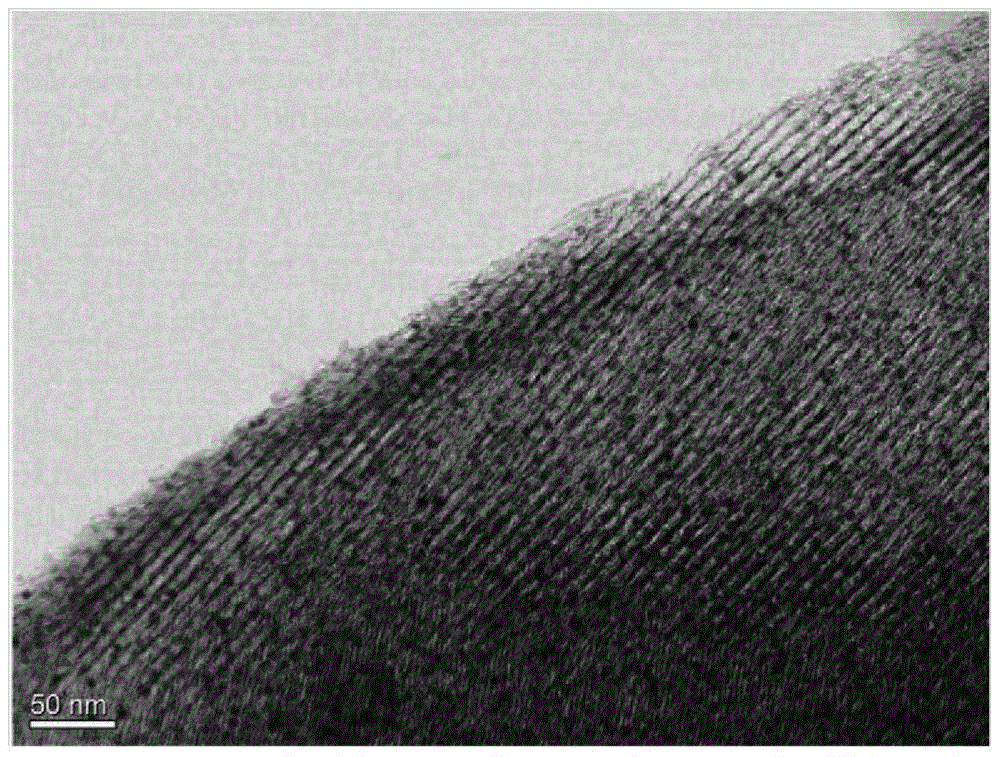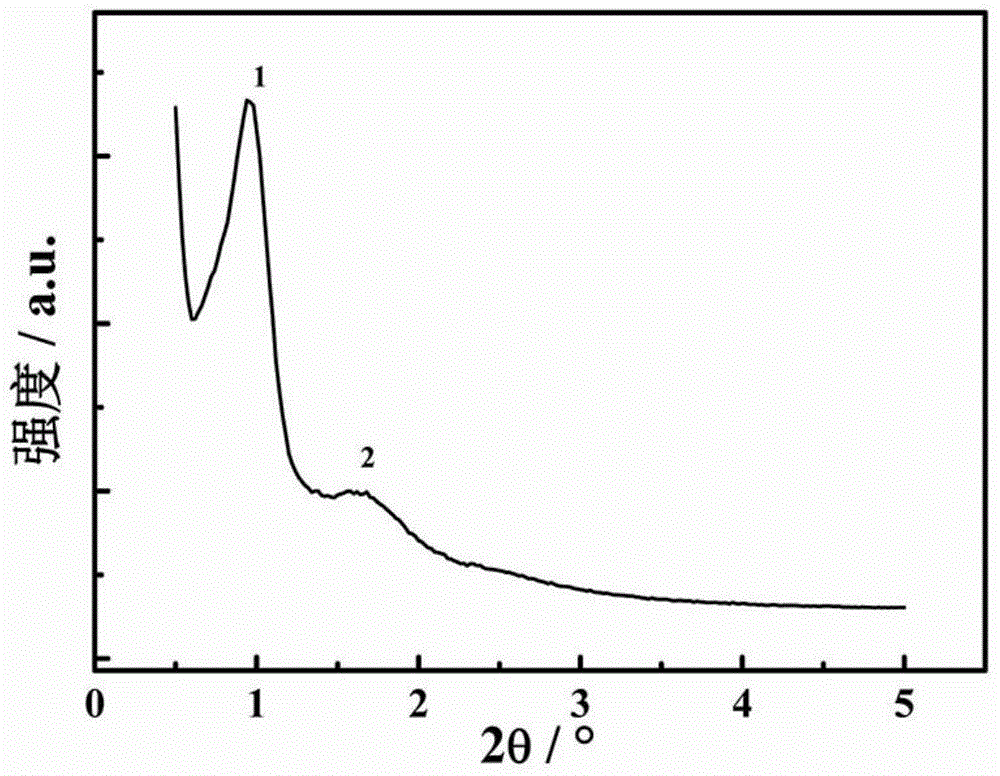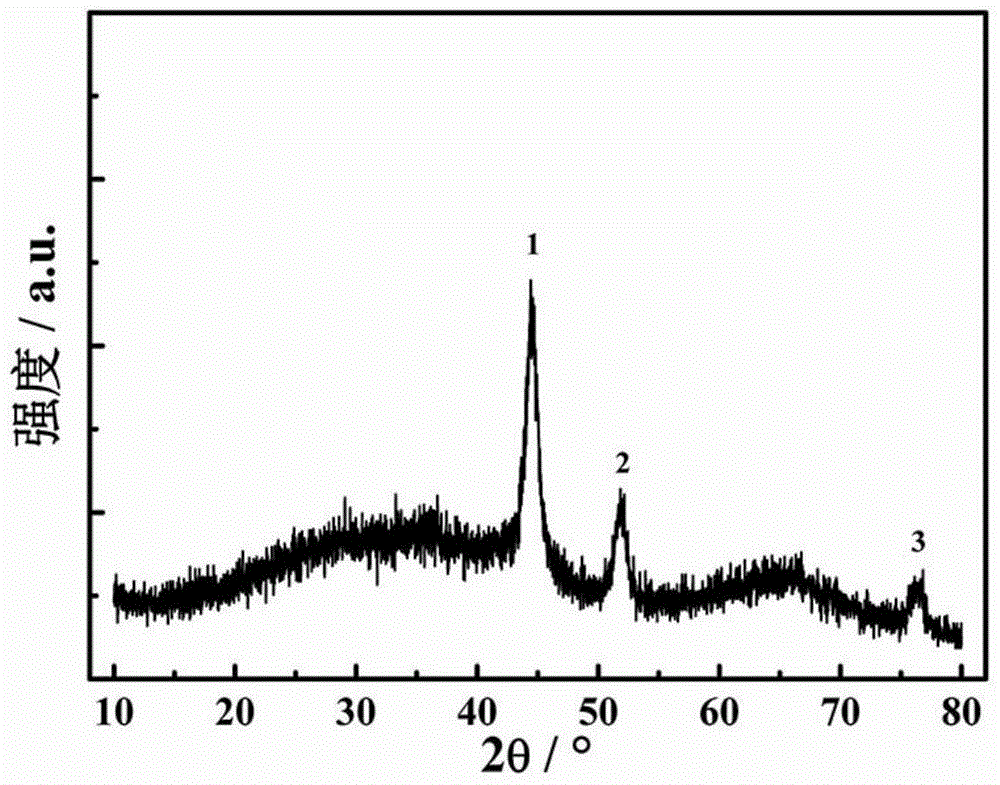Nickel-aluminum catalyst and its preparation method and application in carbon monoxide methanation
A carbon monoxide and catalyst technology, applied in chemical instruments and methods, physical/chemical process catalysts, hydrocarbon production from carbon oxides, etc., can solve problems such as sintering deactivation, achieve anti-sintering sintering growth, and improve high-temperature thermal stability Effect
- Summary
- Abstract
- Description
- Claims
- Application Information
AI Technical Summary
Problems solved by technology
Method used
Image
Examples
preparation Embodiment 1
[0038] Step 1, 2g polyethylene oxide-polypropylene oxide-polyethylene oxide triblock copolymer and 0.255gNi(NO 3 ) 2 ·6H 2 O is placed in 10ml of ethanol, stirred to make it dissolve or disperse evenly;
[0039] Step 2, put 1.86g of aluminum isopropoxide and 1.6ml of 67% nitric acid aqueous solution in 10ml of ethanol, and stir to dissolve or disperse them evenly;
[0040] Step 3: Mix the two systems prepared in Step 1 and Step 2, and stir to make them uniformly dispersed, then dry to obtain a green solid, and dry at 50°C for 48 hours;
[0041] Step 4: Roast the green solid obtained in step 3 in the air as follows: rise from room temperature 25°C to 150°C for 2 hours, then bake at 210°C for 4 hours, then heat up to 320°C for 2 hours, and finally bake at 700°C 4h. During the heating process, the heating rate is kept at 2°C / min. After the calcination is completed, it can be cooled naturally at room temperature.
preparation Embodiment 2
[0043] Step 1, 2g polyethylene oxide-polypropylene oxide-polyethylene oxide triblock copolymer and 0.25gNi(NO 3 ) 2 ·6H 2 O is placed in 10ml of ethanol, stirred to make it dissolve or disperse evenly;
[0044] Step 2, put 1.85g of aluminum isopropoxide and 1.5ml of 67% nitric acid aqueous solution in 10ml of ethanol, and stir to dissolve or disperse them evenly;
[0045] Step 3: Mix the two systems prepared in Step 1 and Step 2, and stir to make them uniformly dispersed, then dry to obtain a green solid, and dry at 60°C for 24 hours;
[0046] Step 4, the green solid obtained in step 3 is roasted in the air as follows: from room temperature 20°C to 150°C for 2 hours, then at 210°C for 4 hours, then at 320°C for 2 hours, and finally at 700°C 4h. During the heating process, the heating rate is kept at 2°C / min. After the calcination is completed, it can be cooled naturally at room temperature.
preparation Embodiment 3
[0048] Step 1, 2g polyethylene oxide-polypropylene oxide-polyethylene oxide triblock copolymer and 0.26gNi(NO 3 ) 2 ·6H 2 O is placed in 10ml of ethanol, stirred to make it dissolve or disperse evenly;
[0049] Step 2, put 1.855g of aluminum isopropoxide and 1.55ml of 67% nitric acid aqueous solution in 10ml of ethanol, and stir to make them dissolve or disperse evenly;
[0050] Step 3: Mix the two systems prepared in Step 1 and Step 2, and stir to disperse them uniformly, then dry to obtain a green solid, and dry at 55°C for 30 hours;
[0051] Step 4: Roast the green solid obtained in step 3 in the air as follows: rise from room temperature 25°C to 150°C for 2 hours, then bake at 210°C for 4 hours, then heat up to 320°C for 2 hours, and finally bake at 700°C 4h. During the heating process, the heating rate is kept at 2°C / min. After the calcination is completed, it can be cooled naturally at room temperature.
[0052] Utilize following test to carry out property test to th...
PUM
| Property | Measurement | Unit |
|---|---|---|
| size | aaaaa | aaaaa |
| degree of polymerization | aaaaa | aaaaa |
| degree of polymerization | aaaaa | aaaaa |
Abstract
Description
Claims
Application Information
 Login to View More
Login to View More - R&D
- Intellectual Property
- Life Sciences
- Materials
- Tech Scout
- Unparalleled Data Quality
- Higher Quality Content
- 60% Fewer Hallucinations
Browse by: Latest US Patents, China's latest patents, Technical Efficacy Thesaurus, Application Domain, Technology Topic, Popular Technical Reports.
© 2025 PatSnap. All rights reserved.Legal|Privacy policy|Modern Slavery Act Transparency Statement|Sitemap|About US| Contact US: help@patsnap.com



